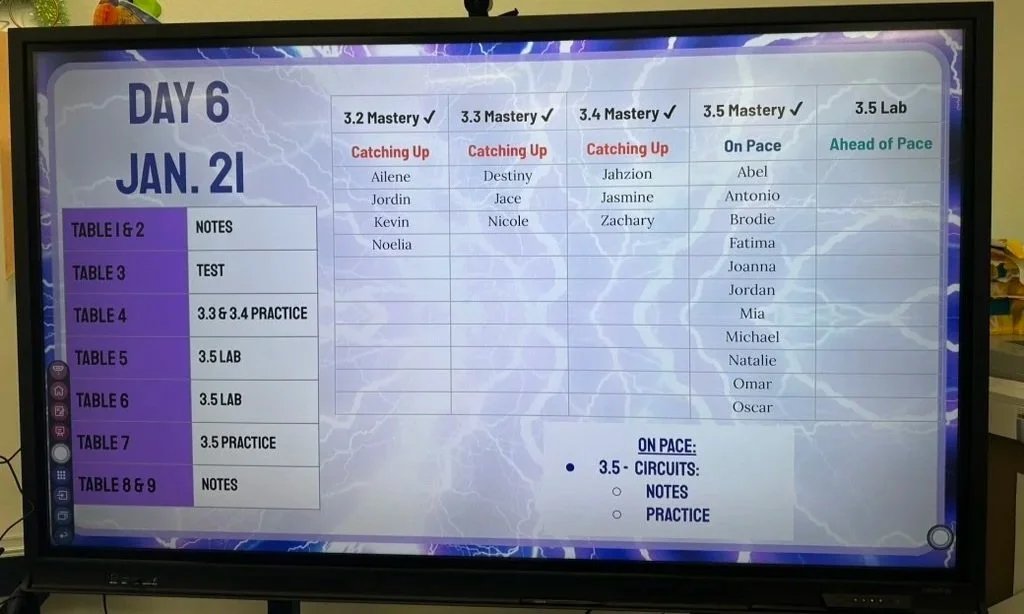Public Pacing Trackers
Using a pacing tracker effectively is all about framing. If students see their progress as a measure of their intelligence, they’ll become competitive and some will give up. However, if they see it as a reflection of their work ethic and a tool to inspire collaboration, they’ll be motivated to work harder and to learn from peers who have the knowledge they need. Our teachers use a public pacing tracker to encourage hard work, grit, and collaboration.
Most of our K-12 teachers have received little pushback on their use of public pacing trackers in their classroom. When there have been issues, they have generally stemmed from a parent’s or administrator’s misunderstanding of the tracker’s purpose and what it reveals.
Key points to address if misunderstandings arise:
Teachers do not display grades or ability, just progress through a specific unit.
Students always have the opportunity to catch up.
The tracker should not reflect ability level but instead effort. If it reflects ability level, then differentiation needs to be addressed.
It can be a very powerful tool for collaboration. Students can identify peers who have mastered skills and can support them without having to go straight to the teachers.
Alternatives to listing students, by name, on a public pacing tracker:
Whether you use a progress tracker is completely your choice. We have a number of teachers who use personal “game boards” or individual trackers students keep in their binders. Alternatively, you can take some of the pressure off the progress tracker by using student initials, emojis, or nicknames (which students can choose/change). This can make the tracker feel more friendly to students as well as parents.
Our teachers, in their own words:
“I introduced the pace tracker as a means of holding ourselves accountable for our learning. We talked about learning being a journey and not a race. In other words, we aren’t racing to the finish and you shouldn’t feel like a failure if you’re not at the same spot as someone else. This became part of the classroom culture. The kids loved seeing the pace tracker! In fact, they let me know if I forgot to move them!” - Leah Frederick, 4th-grade teacher
“The public pacing tracker became an integral part of my classroom this past year. It kept students highly motivated to stay on pace and to continually revise work. Especially when the pandemic closed schools, it became an essential tool for keeping families informed about student progress and supporting students in staying organized and managing time.” - Emily Culp, 6th-grade teacher

